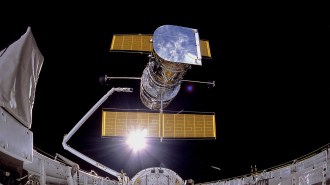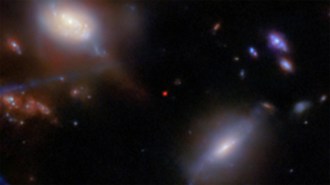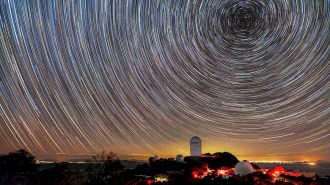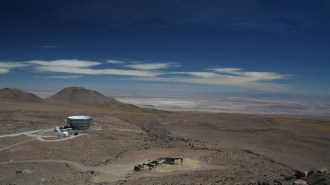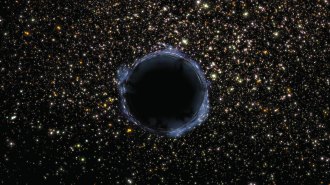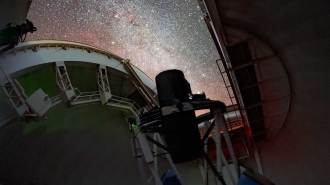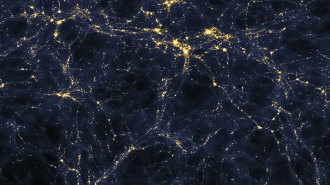Revamping the size of the universe
Excerpt from the May 30, 1964, issue of Science News Letter
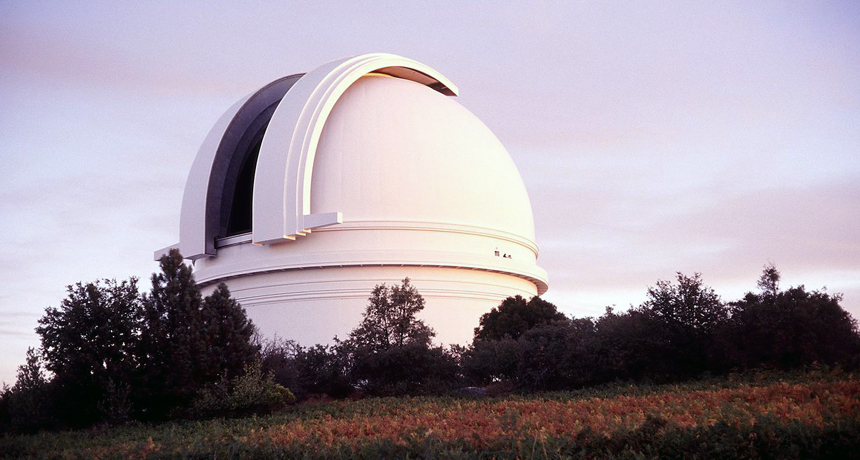
BIG DOME In 1964, the 200-inch Hale telescope atop Mt. Palomar was starting to piece together how the universe was put together. Today, new telescopes show that the farthest light in the universe is 13.8 billion light-years away. But astronomers still aren't sure whether that lights marks the true end of the cosmos or if there is still more to discover.
Coneslayer/Wikimedia Commons (CC-BY-3.0)
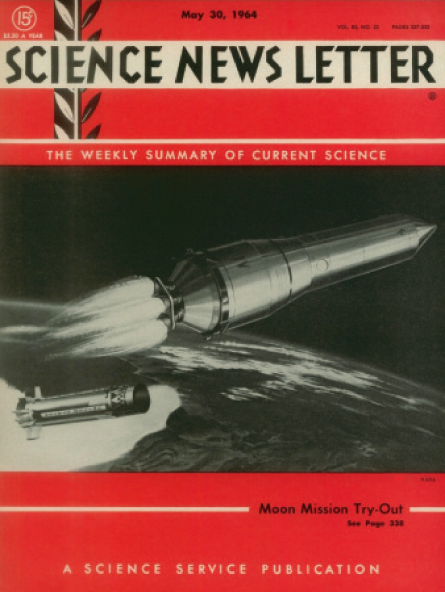 SIZE OF UNIVERSE STUDIED — The universe is much bigger than scientists thought as little as 15 years ago, Dr. Ira S. Bowen, director of Mt. Wilson and Palomar Observatories, said. It is billions of light years in size as seen from the earth, exactly how big even astronomers can not yet say. The amount of space and matter the world’s largest telescope, the giant 200-inch atop Mt. Palomar, can see is so great that how the universe is put together should soon be known…. Before the 200-inch went into operation, the most distant objects in the heavens were thought to be only hundreds of millions of light years away. —
SIZE OF UNIVERSE STUDIED — The universe is much bigger than scientists thought as little as 15 years ago, Dr. Ira S. Bowen, director of Mt. Wilson and Palomar Observatories, said. It is billions of light years in size as seen from the earth, exactly how big even astronomers can not yet say. The amount of space and matter the world’s largest telescope, the giant 200-inch atop Mt. Palomar, can see is so great that how the universe is put together should soon be known…. Before the 200-inch went into operation, the most distant objects in the heavens were thought to be only hundreds of millions of light years away. —